
Six Thinking Hats Technique The Knowledge Compass, Inc Management Consultants
Yellow hat: Positive thinking for exploring benefits. Green hat: Creative and innovative ideas. Blue hat: Facilitation and process control. In all, the six thinking hats process provides a framework that improves collaboration, decision-making, and problem-solving by leveraging the power of parallel thinking and tapping into group intellect.
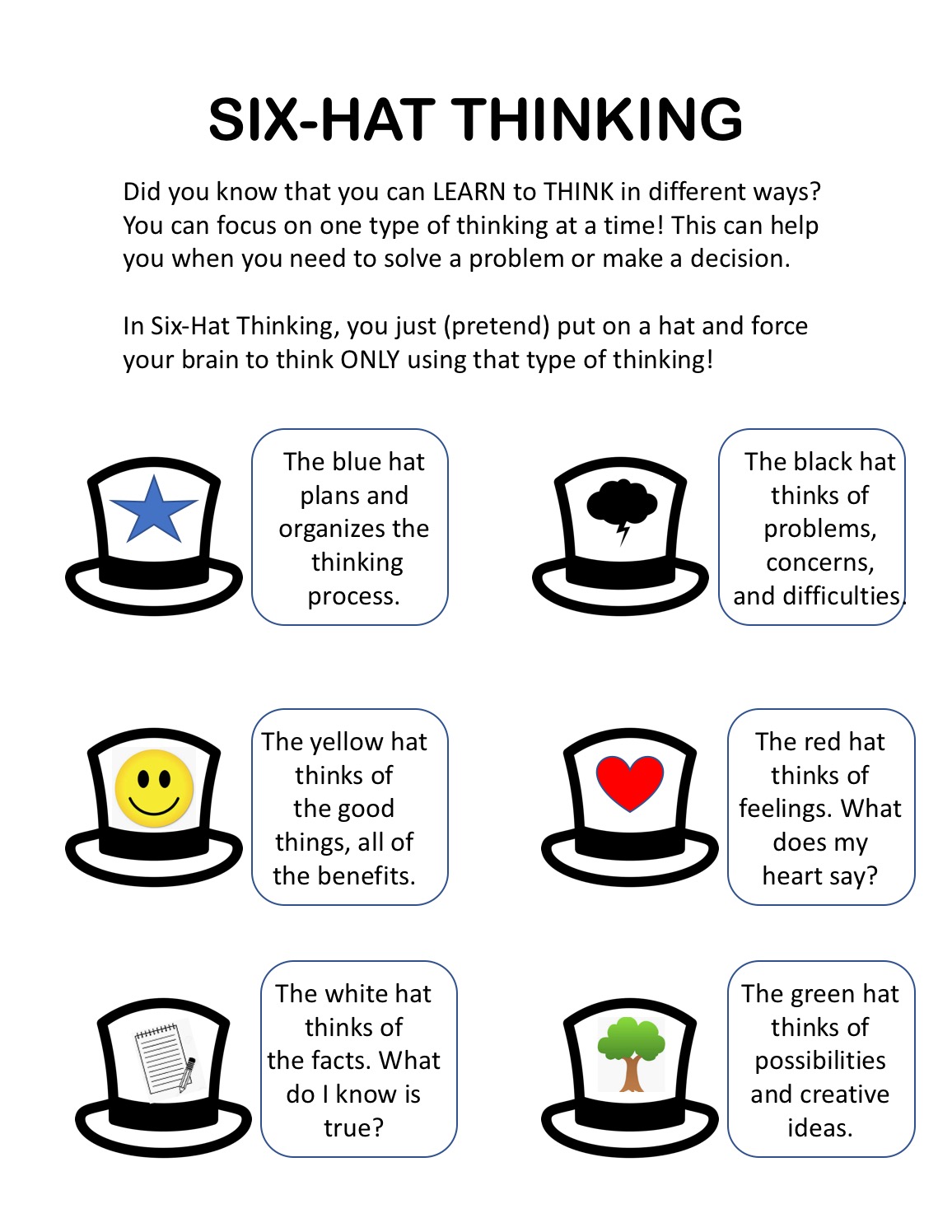
SixHat Thinking Big Ideas for Little Scholars
The six thinking hats are as follows: the blue hat (conductor's hat), the green hat (creative hat), the red hat (hat for the heart), the yellow hat (optimist's hat), the black hat (judge's.

Six Thinking Hats
The Blue Hat (Planning) This is usually the person chairing the meeting or heading up a team. They set the ground rules. A session will most often start and end with this person. Questions that are likely to be asked while wearing this hat: "What is the problem?" "What are the benefits of solving this?" The White Hat (Facts)

Book Summary Six Thinking Hats® by Edward de Bono
White hat Red hat Black hat Yellow hat Green hat Blue hat White hat The white thinking hat represents the ability to focus on data that you have available to you. This includes analysis, evaluation and testing of information and data. White hat thinking means filling in gaps through acquiring new knowledge and information. Red hat
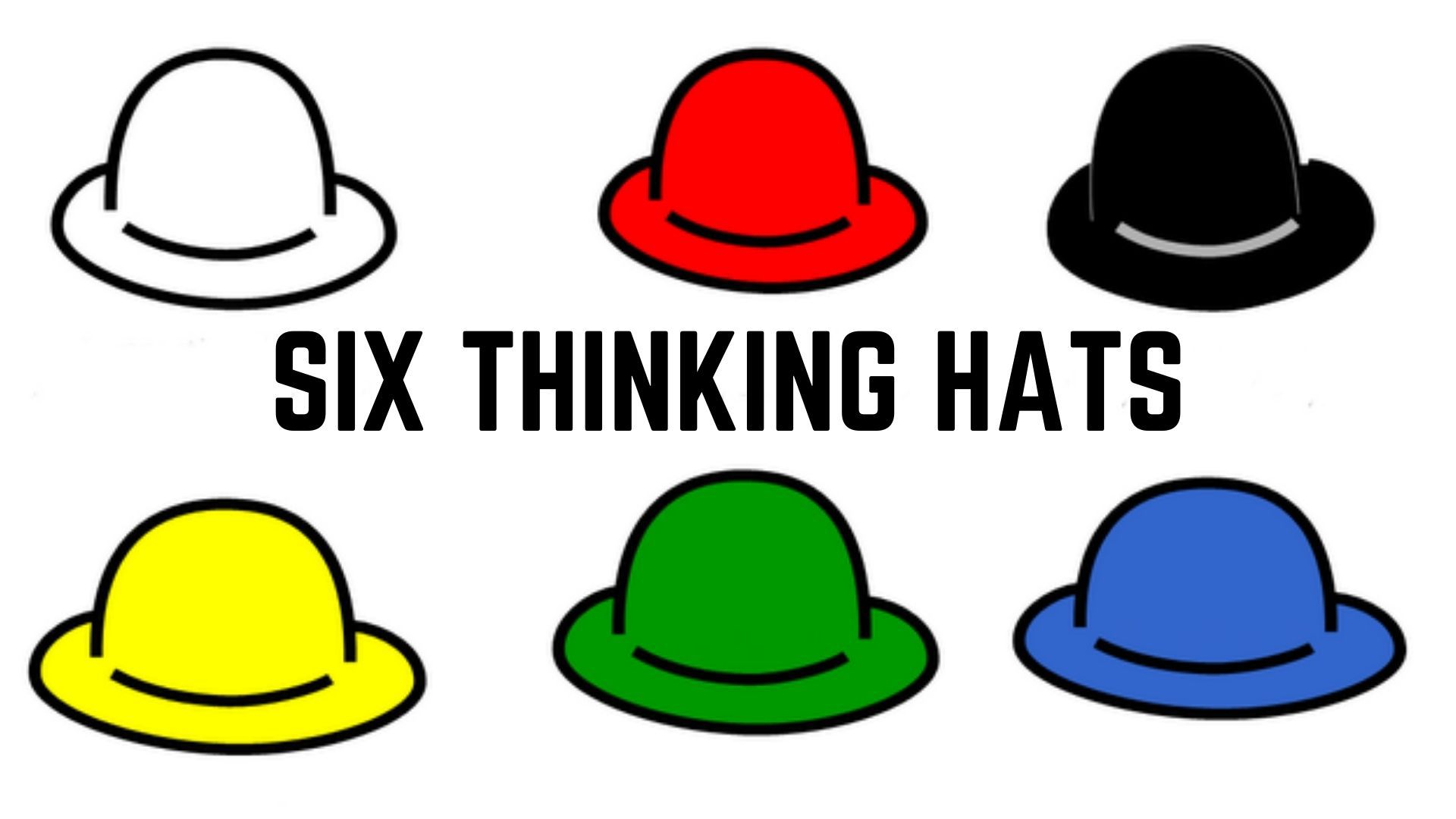
Six Thinking Hats Definition, Benefits & Framework Explained Marketing91
The Six Thinking Hats is a role-playing model developed by Edward de Bono in 1986. Each hat represents a different lens or perspective on a particular issue and is an insightful activity that prevents narrow thinking. It serves as a team-based problem solving and brainstorming technique that can be used to explore problems through various perspectives in order to uncover options that might.
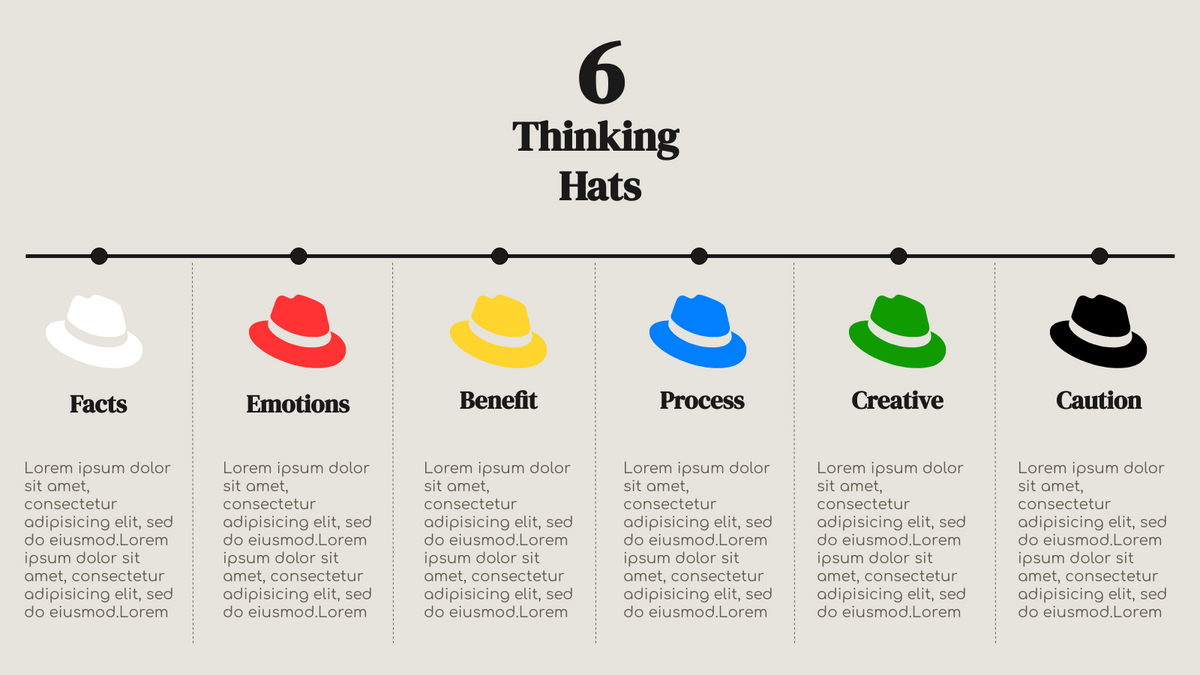
Six Thinking Hats Example Six Thinking Hat Template
Step 1: Define an issue to discuss. Six Thinking Hats sessions should be focused on a particular problem that needs to be solved or a decision that needs to be made. Step 2: Assign the blue hat to one person. The blue hat is the meeting leader who starts and ends the discussion and announces when it's time to change hats.
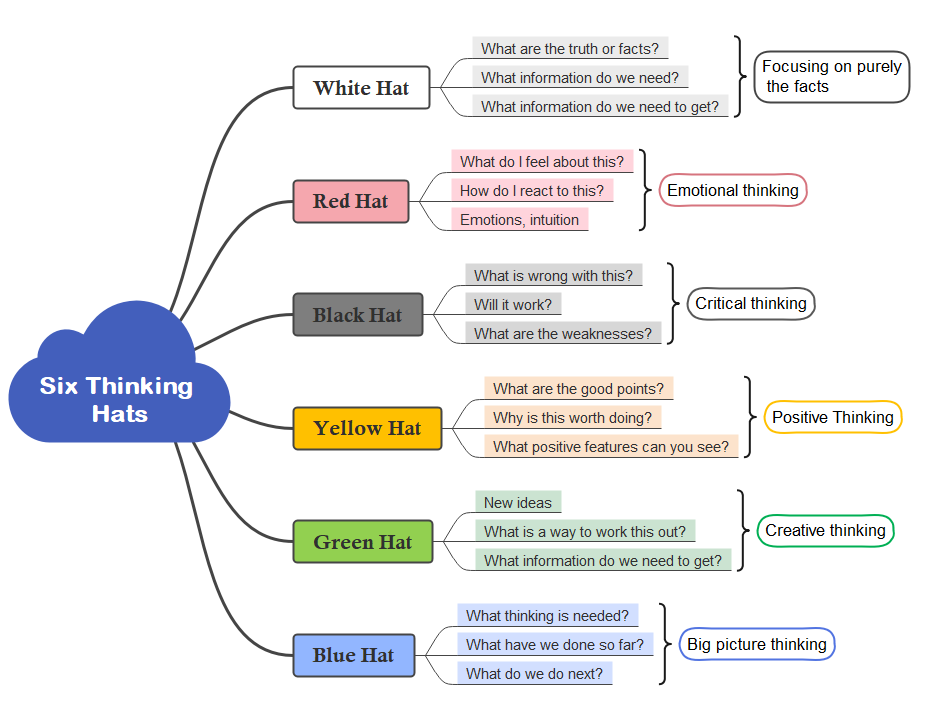
Free Six Thinking Hats Template & Examples EdrawMind
This article contains the meaning of the Six Thinking Hats technique and a practical explanation of all six thinking hats, including examples. You will also learn about different related concepts, such as parallel thinking. The article also contains advantages and disadvantages of this method to extract maximum value and to avoid pitfalls.
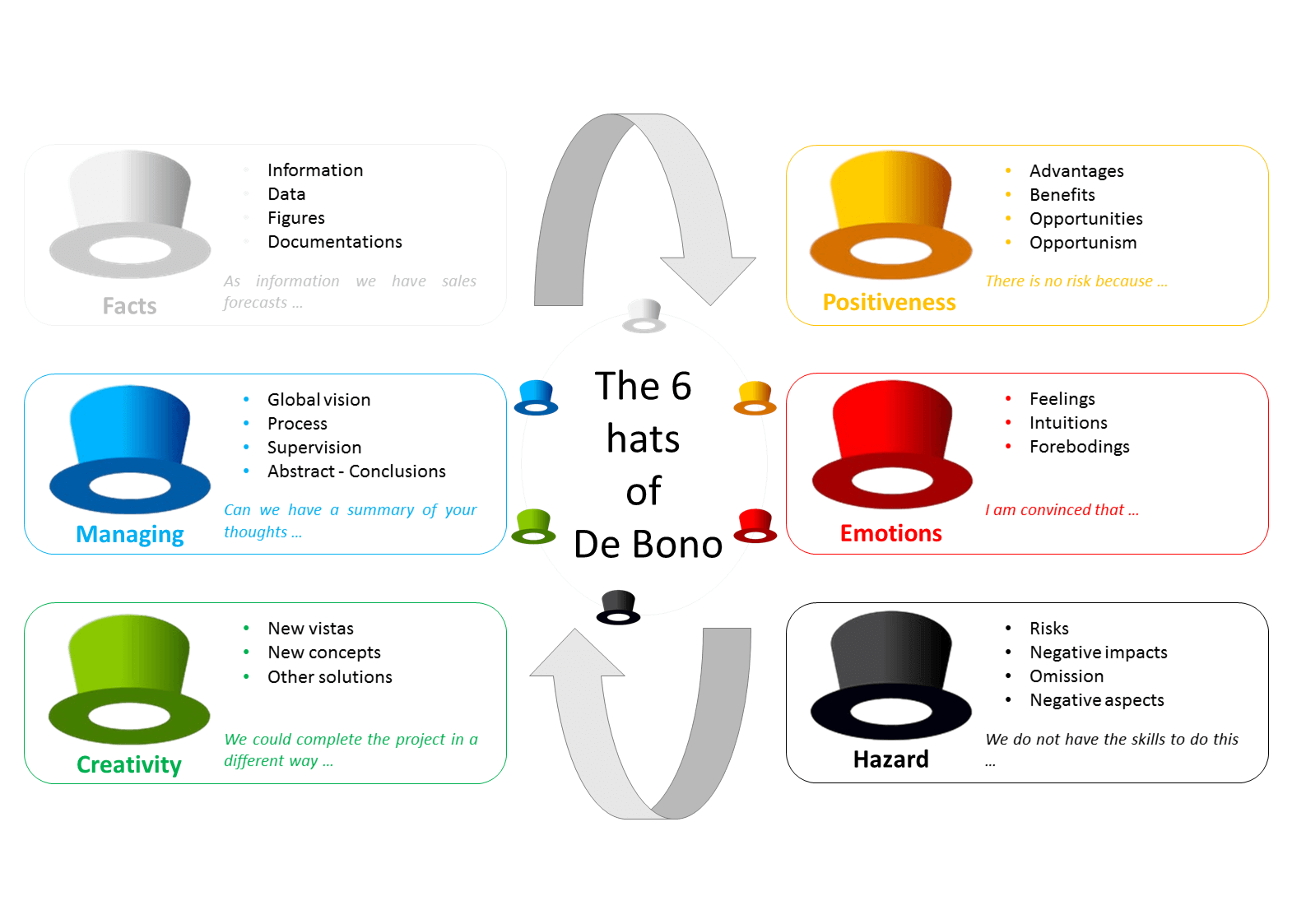
The six thinking hats of De Bono FGC Consulting
For instance, a meeting may be called to review a particular problem and to develop a solution for the problem. The Six Thinking Hats method could then be used in a sequence to first explore the problem, then develop a set of solutions, and to finally choose a solution through critical examination of the solution set.
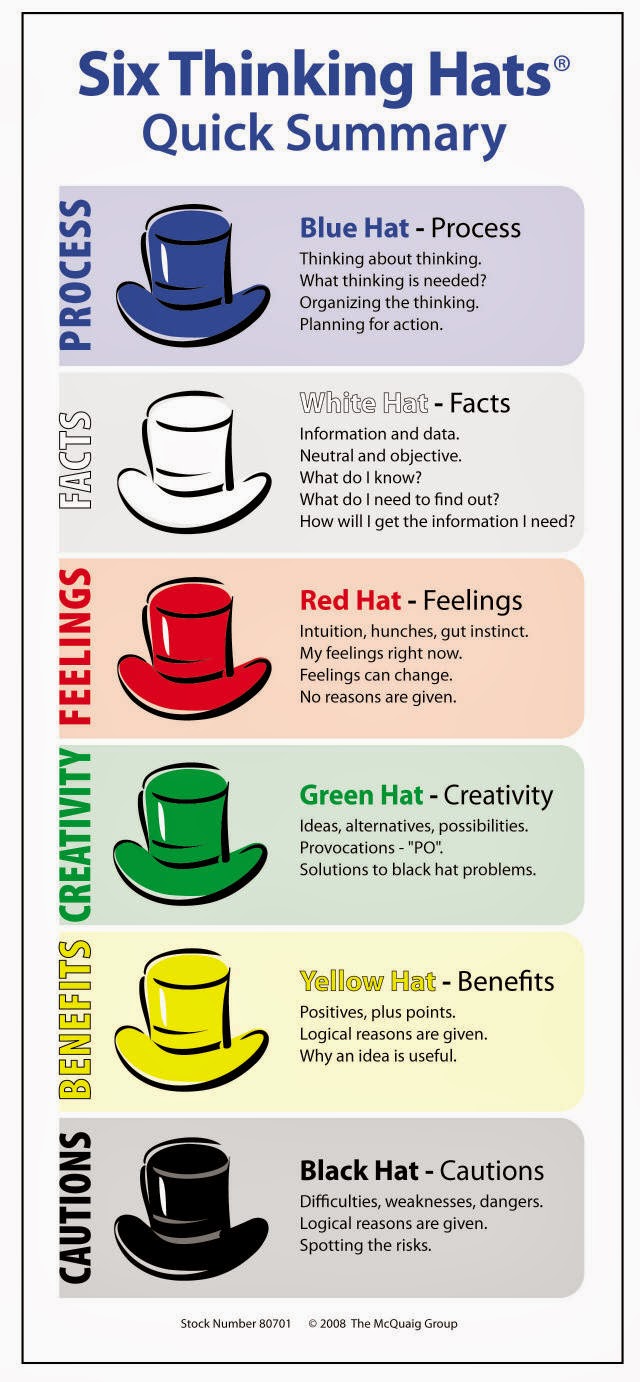
Edward de bono six thinking hats
Six thinking hats. The Six Thinking Hats method encourages participants to cycle through six different ways of thinking, using the metaphor of wearing different conceptual "hats". Developed by Dr Edward de Bono, the "Six Thinking Hats" ™ technique is a framework designed to promote holistic and lateral thinking in decision-making and.
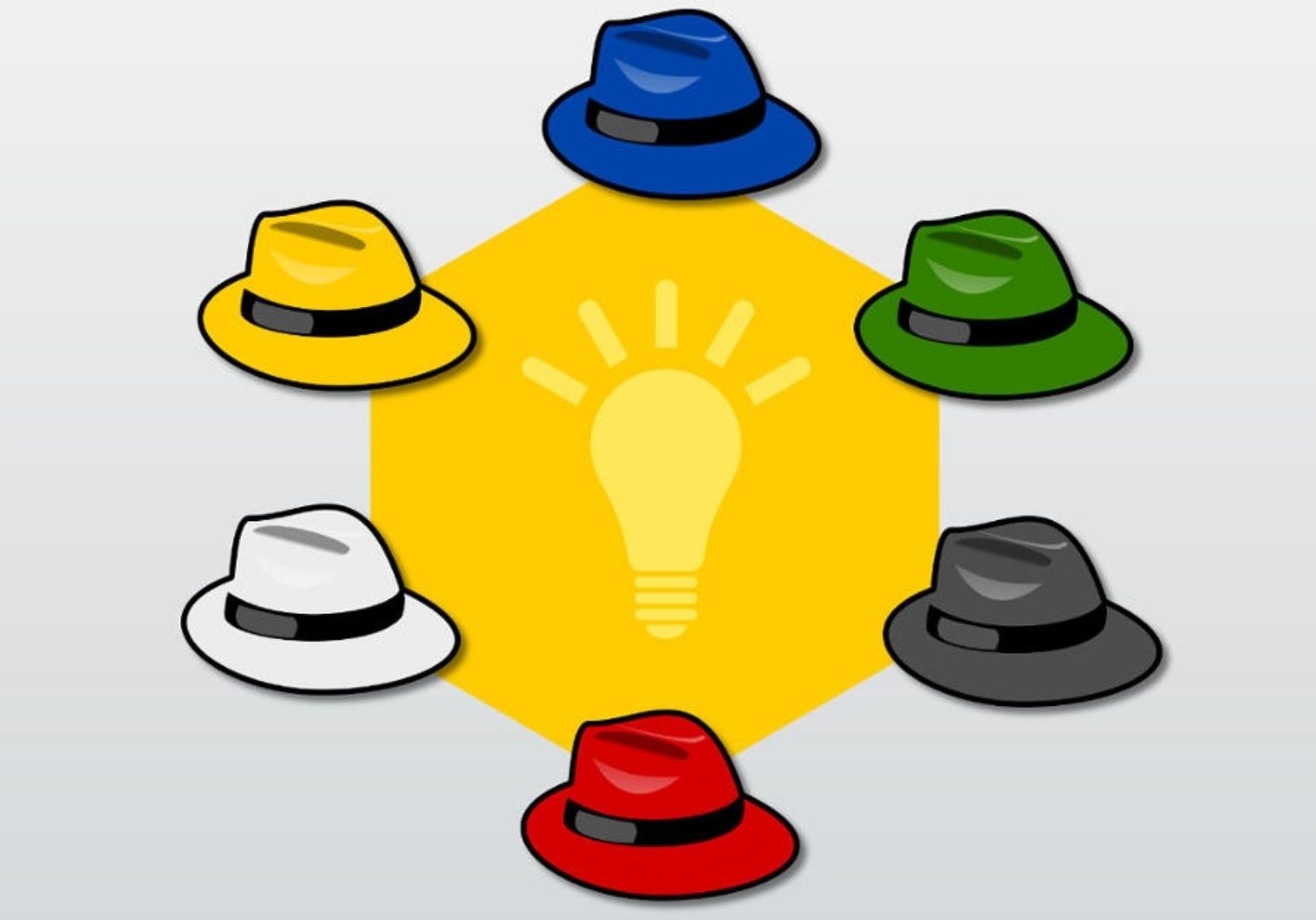
Six Thinking Hats Definition, Benefits & Framework Explained Marketing91
[1] De Bono - who died in 2021 - was also the inventor of "lateral thinking," a method of solving problems indirectly, often in creative and surprising ways. Similarly, Six Thinking Hats is a way to understand and explore different types of thinking. Six Thinking Hats for Decision Making
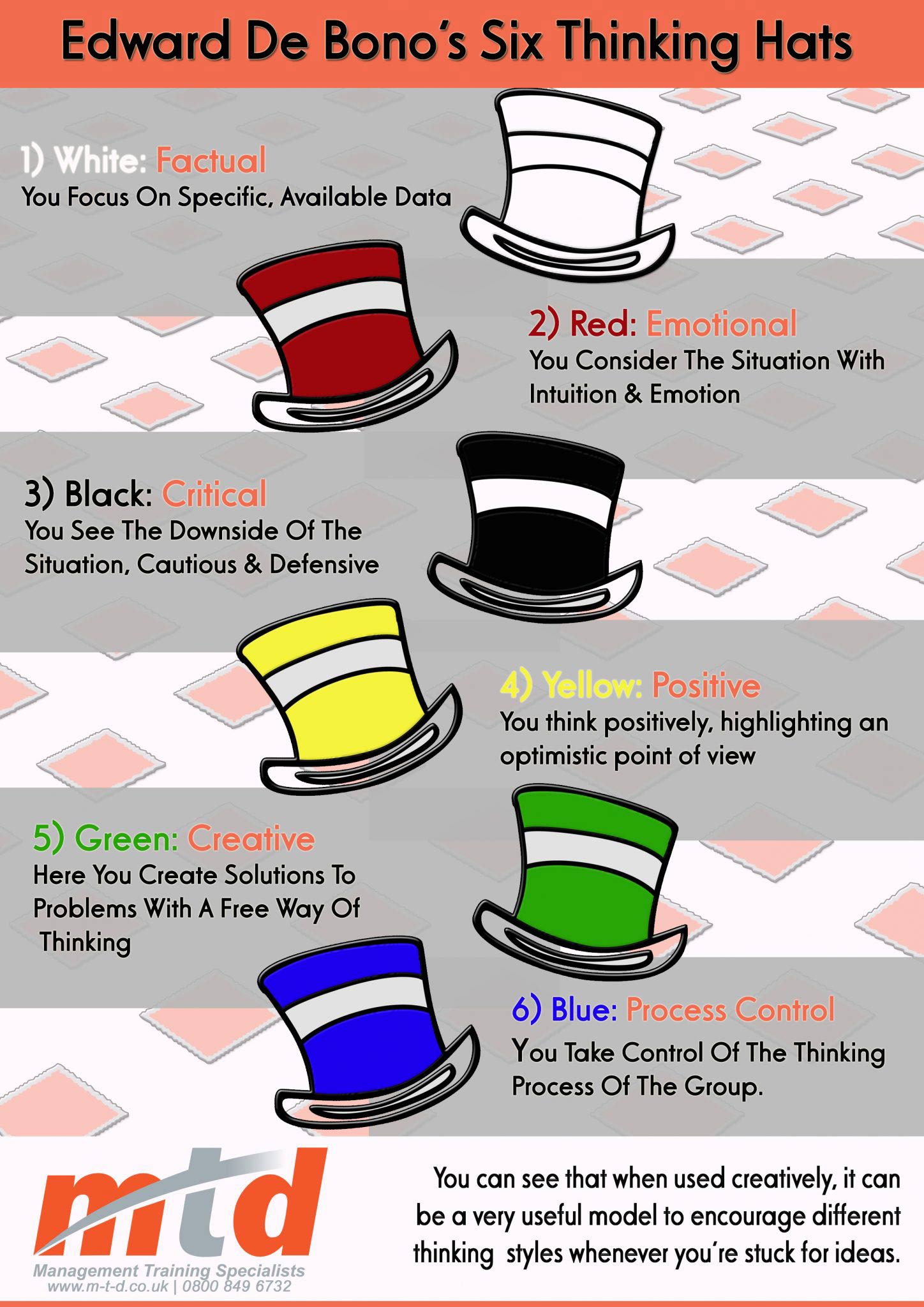
The Six Thinking Hats Infographic
Finding a Job Interviewing Career Development What Are The Six Thinking Hats? (With Benefits And Examples) What Are The Six Thinking Hats? (With Benefits And Examples) Indeed Editorial Team Updated 11 August 2023 Effective decision-making is essential to achieving important objectives and goals.

Six Thinking Hats Untools
• Holly Davis 1= black (most like me) 2= green 3= red 4= white 5= yellow 6= blue (least like me) Six Thinking Hats Six Thinking Hats is a strategy that teaches students be FLEXIBLE THINKERS. Students learn about six different types of thinking they can apply to any situation, represented by different colored hats. Optimistic Judgmental Creative

Reflective Teaching for YOU Six Thinking Hats by Edward de Bono
Six Thinking Hats Understanding the Concept of Six Thinking Hats This article discusses what the six thinking hats technique is, its benefits, what each hat represents, and the practical application of this thinking process. Published 15 Sep 2023 What is the Six Thinking Hats Technique?

How to Use the Six Thinking Hats Technique Lucidchart Blog
Examples of using Six Thinking Hats in different scenarios: Pros and Cons of the Six Thinking Hats Methodology Try Boardmix for Free Home>Examples>Six Thinking Hats Templates, Examples & Tips Harry

The Six Thinking Hats Retrospective — Agility 11
Six Thinking Hat Mindmap; Edit this example. The template above is in the form of a mind map. For those who don't have an idea about what a mind map is, it is a tool that provides information sharing among colleagues. In general, it is highly similar to the concept behind the Six Thinking Hats making it a perfect example. Six Thinking Hats Board
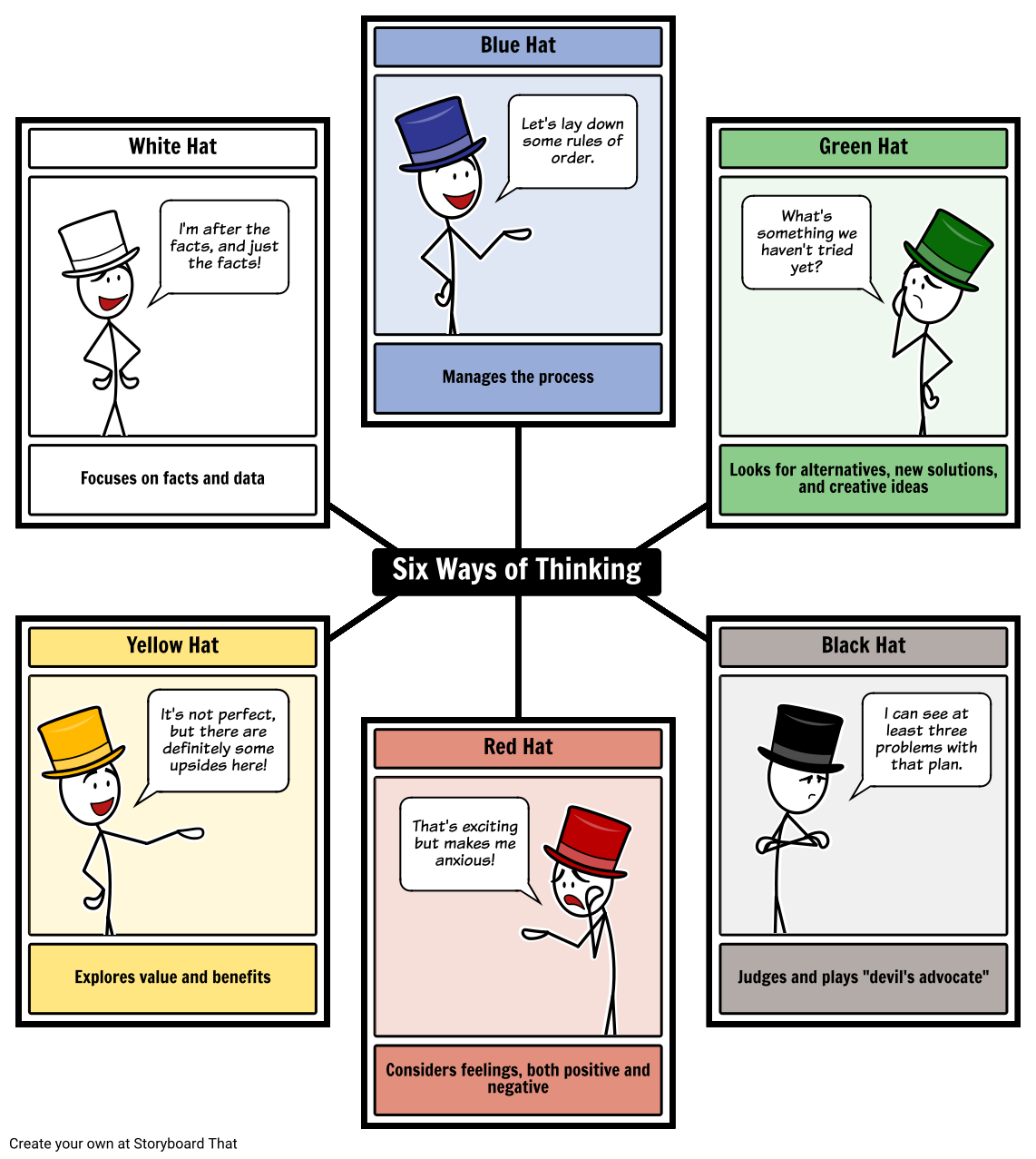
Six Thinking Hats de Bono Brainstorm with 6 Thinking Hats
5 min read How to Lead a Six Thinking Hats Exercise (+Questions and Template) Emily May : Jun 14, 2023 5:00:00 AM Templates Leading Teams Exercises Whether you've heard of the Six Thinking Hats before, consider this as your sign to give it a try for yourself at least once. Here's why.